The Soviet War Memorial of Treptower Park.
It celebrates Soviet victory rather than commemorating the fallen. This is also why it has become an object of politics and propaganda over the past two years. A guide in images, stories and news.
The Treptower Park Memorial in Berlin is the most important war memorial outside Russia and served as a prototype for other memorials in the Soviet Union, such as the Volgograd (Stalingrad) Memorial on the Mamayev Kurgan (Russian: Мама́ев курга́н, Mamayev Heights), designed by the same same sculptors and architects of the Treptower Memorial.
In Germany, we refer to it as an 'Ehrenmal', which translates to 'Memorial' in English. However, these terms are more suited to individual monuments. What we have in Treptow is a 'Gesamtkunstwerk', a comprehensive work of art. It encompasses architectural, sculptural, textual, pictorial, and landscape elements spread over an area of 200,000 square meters.
The concept for such monuments was conceived during the war itself, around 1942/43, when the initial victories of the Red Army indicated a shift in the military landscape. In 1942, the Soviet Architects' Association held a competition for the design of monuments honoring the heroes of the Second World War.
At that time, the proposed designs included monuments to be incorporated into the main squares of cities or entire urban complexes. This led to plans for Stalingrad, a city synonymous with the decisive battle of the war, which envisaged a "tribute in a monumental architecture ensemble". However, the approach was different in Berlin.
On 17 October 1946, the Military Council of the Soviet Armed Forces in Germany decided to build one or more monumental memorials in Berlin. These were to serve as victory monuments and final resting places for over 20,000 Red Army soldiers who died in the Battle of Berlin. The soldiers, initially buried in temporary graves throughout the city, were to be reburied in cemeteries incorporated into the monument designs.
The Treptower Memorial was built between June 1947 and May 1949, a relatively short period of time. A total of 1,200 workers were assigned to the project by the city's employment offices.
Why was the memorial built in Treptower Park and not in a more central location in the city? There are two reasons:
Firstly, Treptower Park was chosen for a Soviet war cemetery long before a central memorial was planned. As early as 1945, fallen soldiers were moved from various locations in the city to the park. This meant that the location of the memorial was predetermined.
Secondly, the park was surrounded by impressive avenues of plane trees and open fields, providing a spacious setting. This was ideal for realising an impressive design in both size and form.
Visitors enter the complex through one of two side gates designed in the traditional style of a triumphal arch. Their message clearly proclaims victory. A few steps further on, as a point de vue, the statue of "Motherland" (Mutter Heimat, Родина-мать, Rodina-Mat), with its curved figure seen at first from behind.
There is a tense, symbolic relationship between the vulnerable, mourning mother and the distant but already visible main figure, the victorious son and liberator at the very end of the complex. The sculptor of both figures commented on this polarity:
"The drama and the affirmation of life had to merge in the complex. The awareness of the triumph of life should prevail over the feeling of deep sorrow".
Proceeding from this statue you will come to a gate-like structure before entering the main stage. This gate consists of two monumental pylons in the shape of lowered flags. One pylon has an older soldier on the left (as seen in the photo) and the other has a younger soldier on the right. Both soldiers are kneeling in mourning, their helmets and weapons lowered.
This pairing of an older and a younger soldier pays tribute to the two generations that took part in the struggle. The older generation who "liberated Russia through the Great Socialist October Revolution" and the younger generation who "defended the socialist homeland against the fascist enemy" together with their fathers.
Once inside the gate, you enter the main complex. The monumental parterre is framed by massive tree plantings on either side.
Sixteen large blocks of bright white Jura limestone, eight on each side, flank the parterre. These blocks carry reliefs illustrating episodes from the war, along with quotes from Stalin.
On one side of the complex the Stalin´s texts are in German, while on the opposite side they are in Russian.
"DIE IN UNSEREM LANDE VERANKERTE IDEOLOGIE DER GLEICHBERECHTIGUNG ALLER RASSEN UND NATIONEN, DIE IDEOLOGIE DER VÖLKERFREUNDSCHAFT, HAT DEN VOLLEN SIEG ÜBER DIE HITLERFASCHISTISCHE IDEOLOGIE DES BESTIALISCHEN NATIONALISMUS UND RASSENHASSES ERRUNGEN. J. STALIN."
"The ideology of equality of all races and nations rooted in our country, the ideology of friendship among peoples, has achieved complete victory over the Hitler-fascist ideology of bestial nationalism and racial hatred. J. STALIN."
The colossal statue of the Liberator is the highlight of the site. The 11.60-metre sculpture stands on an artificial conical hill concealing a crypt where 200 fallen soldiers are buried.
A common motif in several Soviet war memorials is the image of a Soviet soldier carrying a child. This symbolises the Red Army's role in liberating Europe from fascism. The most iconic of these is in Treptow, where the soldier holds a German girl while standing over a smashed swastika.
In 2013, Moscow announced the death of Ivan Odarchenko, the Second World War veteran who was the model for the statue:
Odarchenko, a towering young man of two metres, worked as a foreman on a kolkhoz before being drafted into the army. He was called to the front in January 1944: his military service included participation in the liberation of Hungary, Austria and Czechoslovakia.
In August 1947, he took part in sports competitions in a stadium in the Weissensee district of Berlin (north of Prenzlauer Berg). After a cross-country race, the sculptor Evgeny Vuchetich approached him and asked him to pose for a sculpture. Vuchetich was working on a monument to the Soldier of the Liberators.
For almost six months, Odarchenko posed with a girl in his arms. At first a real German girl posed, but later she was replaced by three-year-old Svetlana Kotikov, the daughter of the Berlin Commandant. The monument was inspired by an event during the storming of Berlin, when Sergeant Nikolai Masalov risked his life on 30 April 1945 to rescue a three-year-old German girl from a shelling zone.
The monument was unveiled on 8 May 1949, the fourth anniversary of the end of the war. Unlike other war memorials, such as the emotional Schönholzer Heide Monument, Treptow is designed to celebrate victory rather than mourn the dead. There is no explicit mention of the soldiers who died; with the exception of a few high-ranking officials, there are no names within the complex. This is partly because many of the fallen who were transferred to Treptow Park could not be identified, as Red Army soldiers did not wear identification. The 4,800 unknown soldiers buried in the surrounding areas of the complex are all "Unknown Soldiers".
Yesterday, today.
Throughout the GDR era, the memorial served as a symbol of German-Soviet friendship and the defeat of fascism. Official delegations laid wreaths and events included ritual ceremonies and torchlight processions.
In August 1994, the ceremony marking the withdrawal of Russian troops from Germany was held here, attended by Helmut Kohl and President Boris Yeltsin.
On 8 April 2022, the word "Why?" was painted in red on the base of the bronze soldier statue at the Memorial. Other parts of the complex were also vandalised with paint, including a staircase that was made to appear bloodstained.
Since then, this and other memorials in Berlin have been under police surveillance, especially around 8 and 9 May. After several years of threats, mainly from Ukrainian activists protesting against Russia's war of aggression, the Russian community in Berlin, fuelled and supported by Russian propaganda, has reclaimed these monuments to express their pride and, in some cases, their support for Putin's regime.
On Thursday 9 May 2024, bikers from the Russian nationalist motorcycle club "Night Wolves" travelled to Berlin. They stopped at the Soviet memorials in Tiergarten and Treptower Park, where visitors cheered them on. Known for their anti-Western stance, the Night Wolves are supporters of Russian President Vladimir Putin and pro-Russian separatists in eastern Ukraine. The leader of the Night Wolves group also attended Putin's swearing-in ceremony a few days ago.
Memorials are not just for remembrance: They are there to shape consciousness and understanding. They are politics. Even more so than before.


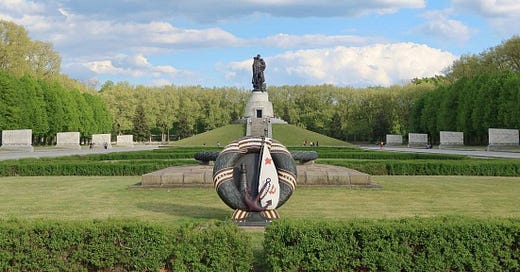


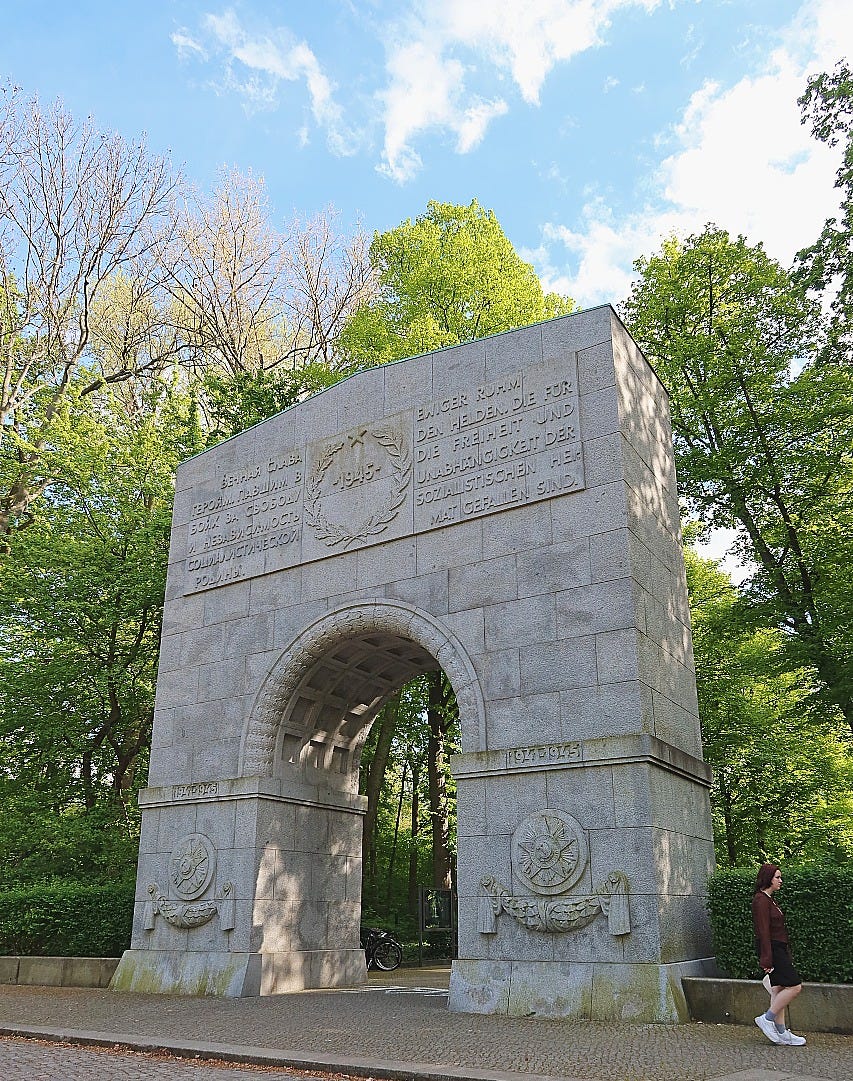
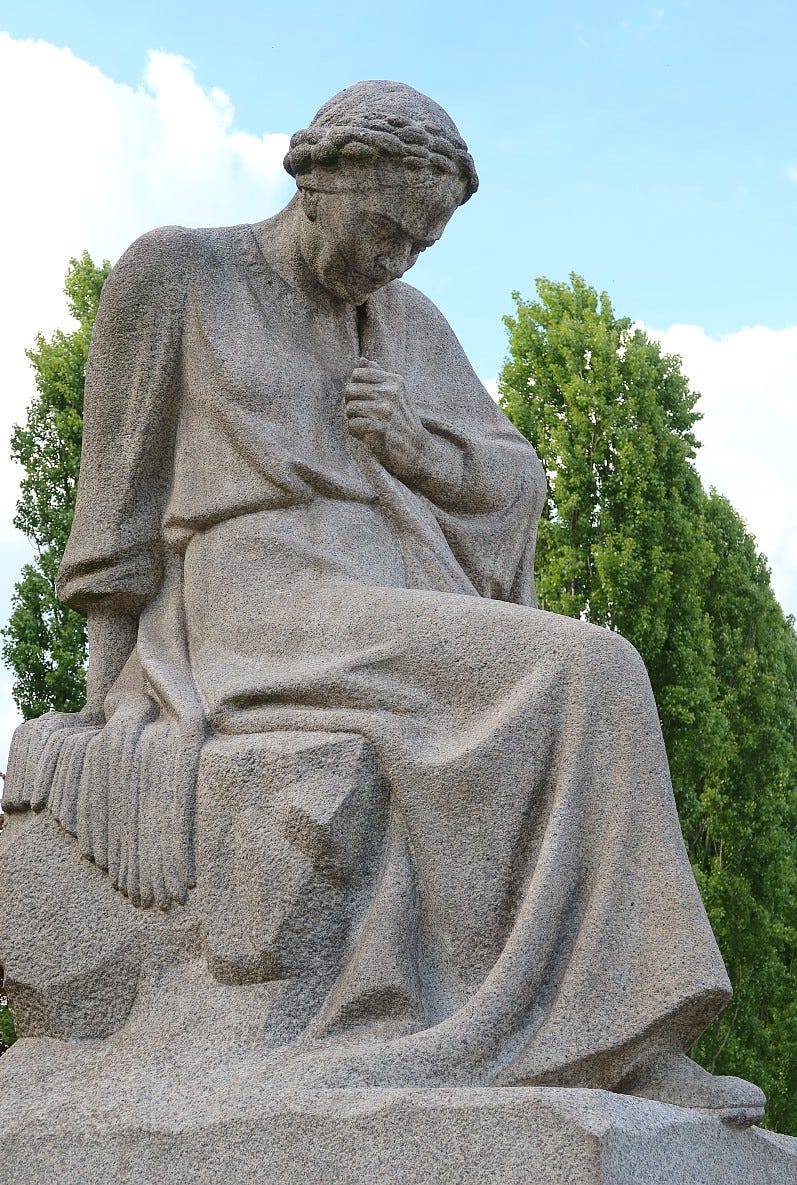
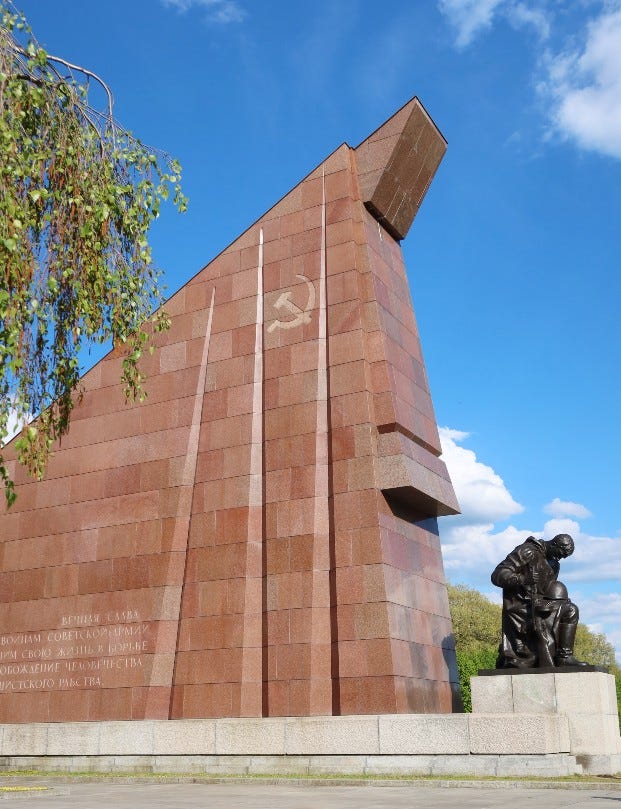
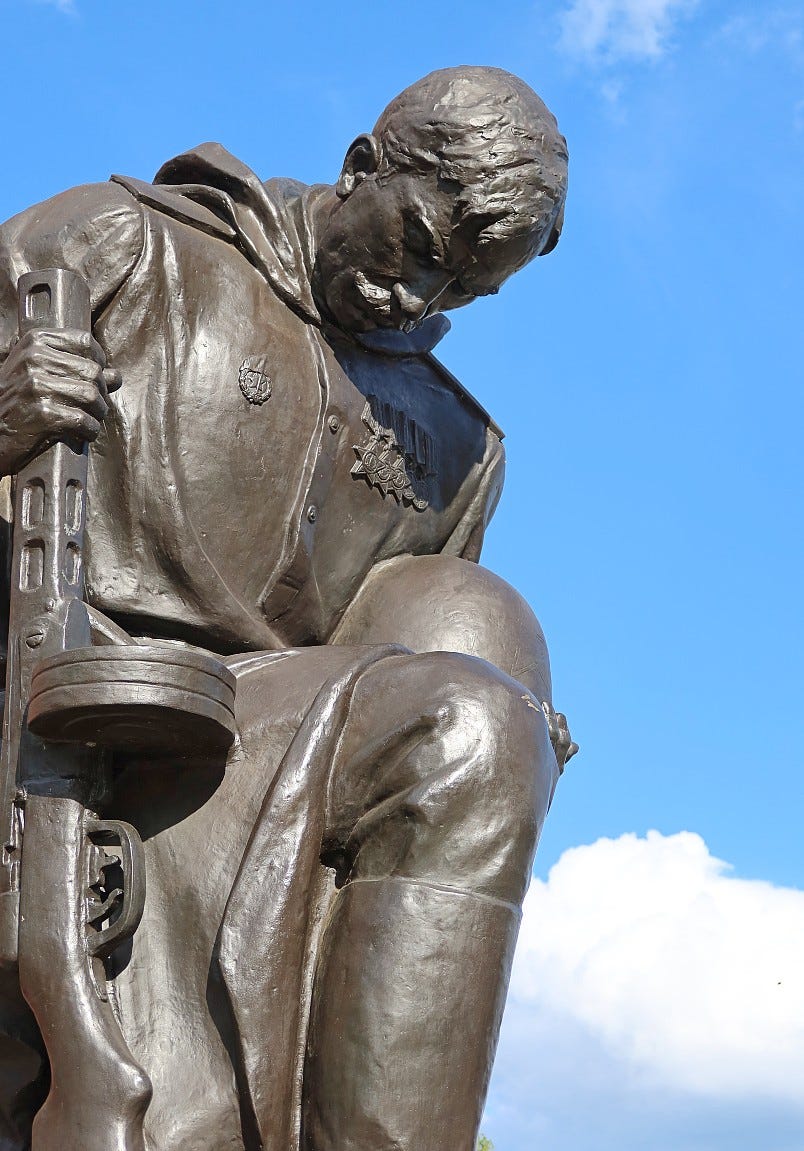
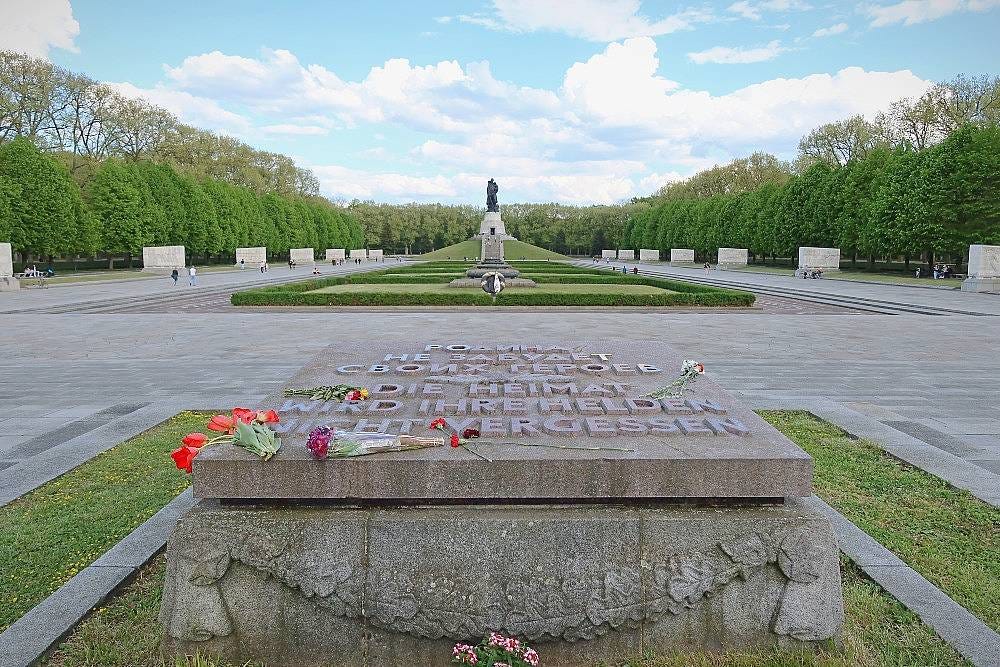


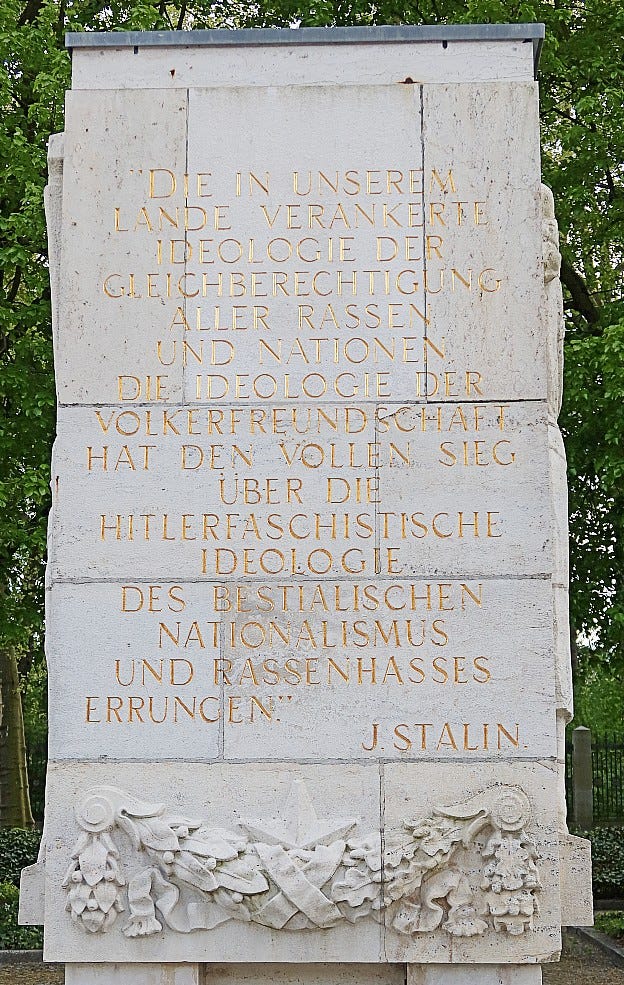

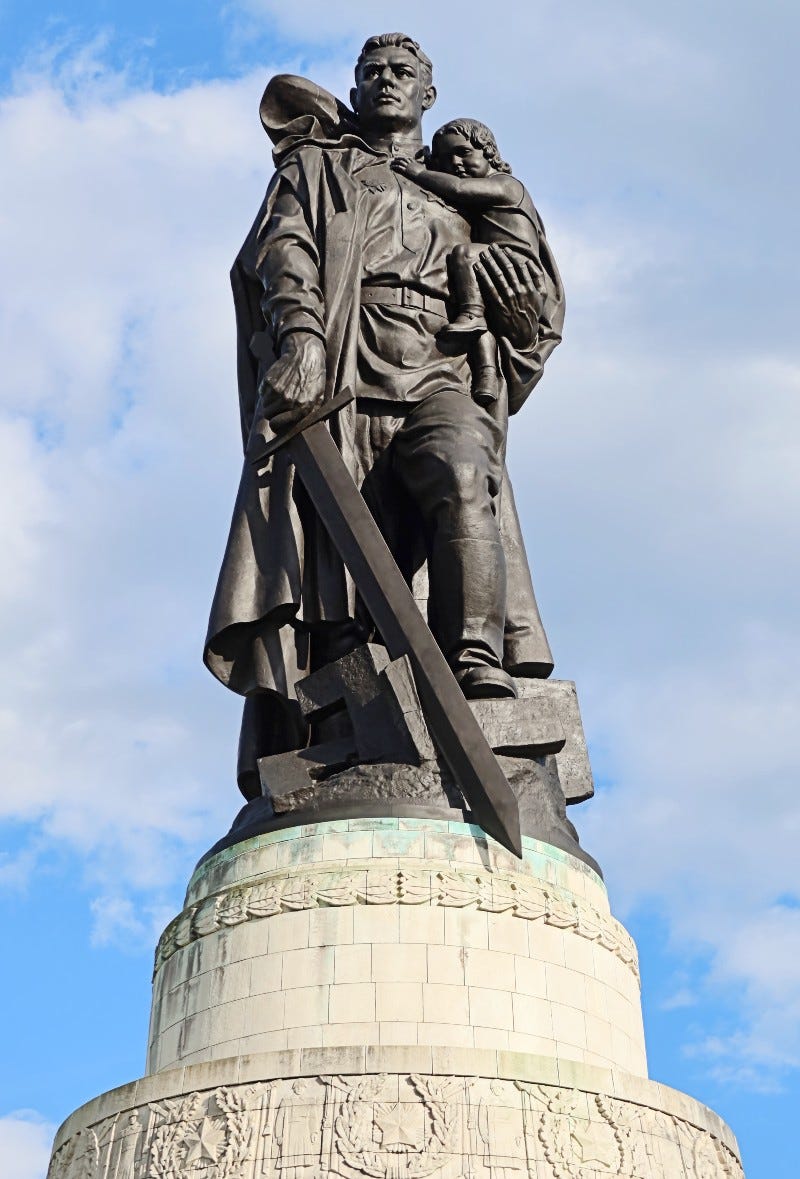
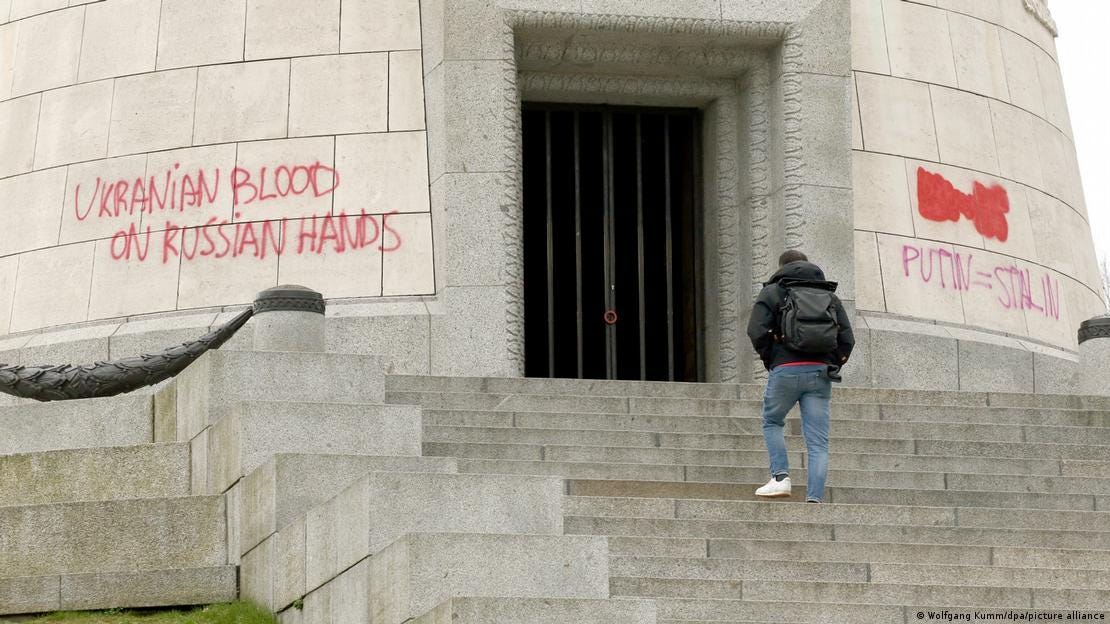
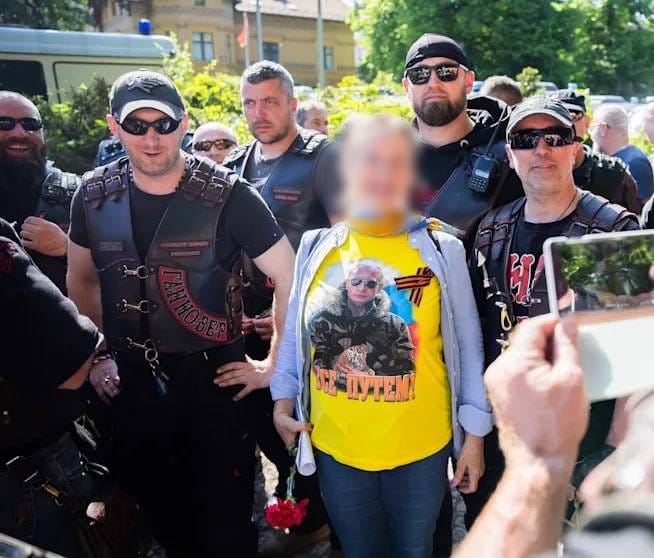
I learn so much from your posts ! Thank you once again.